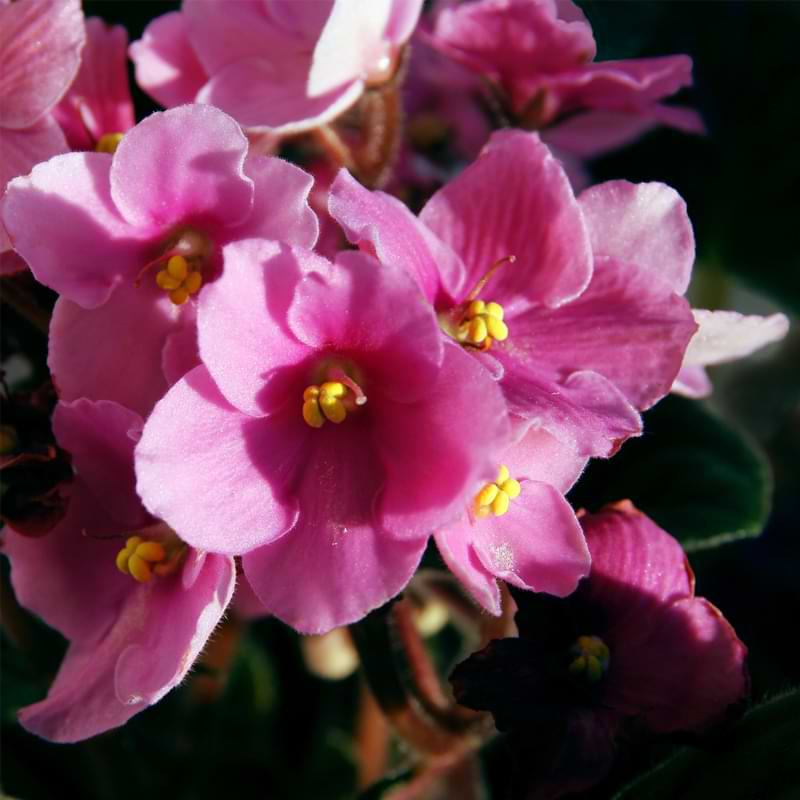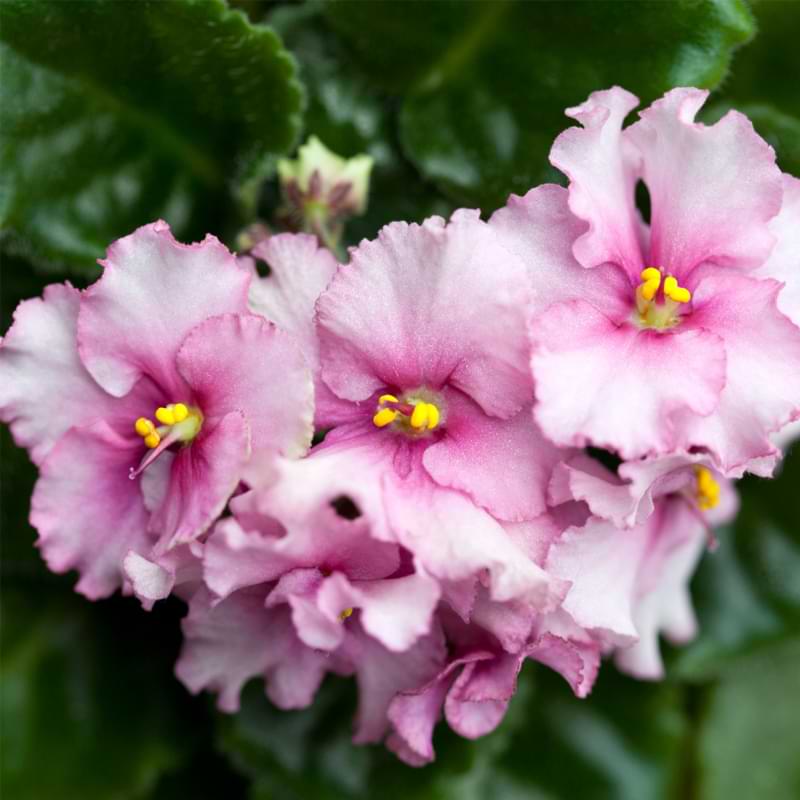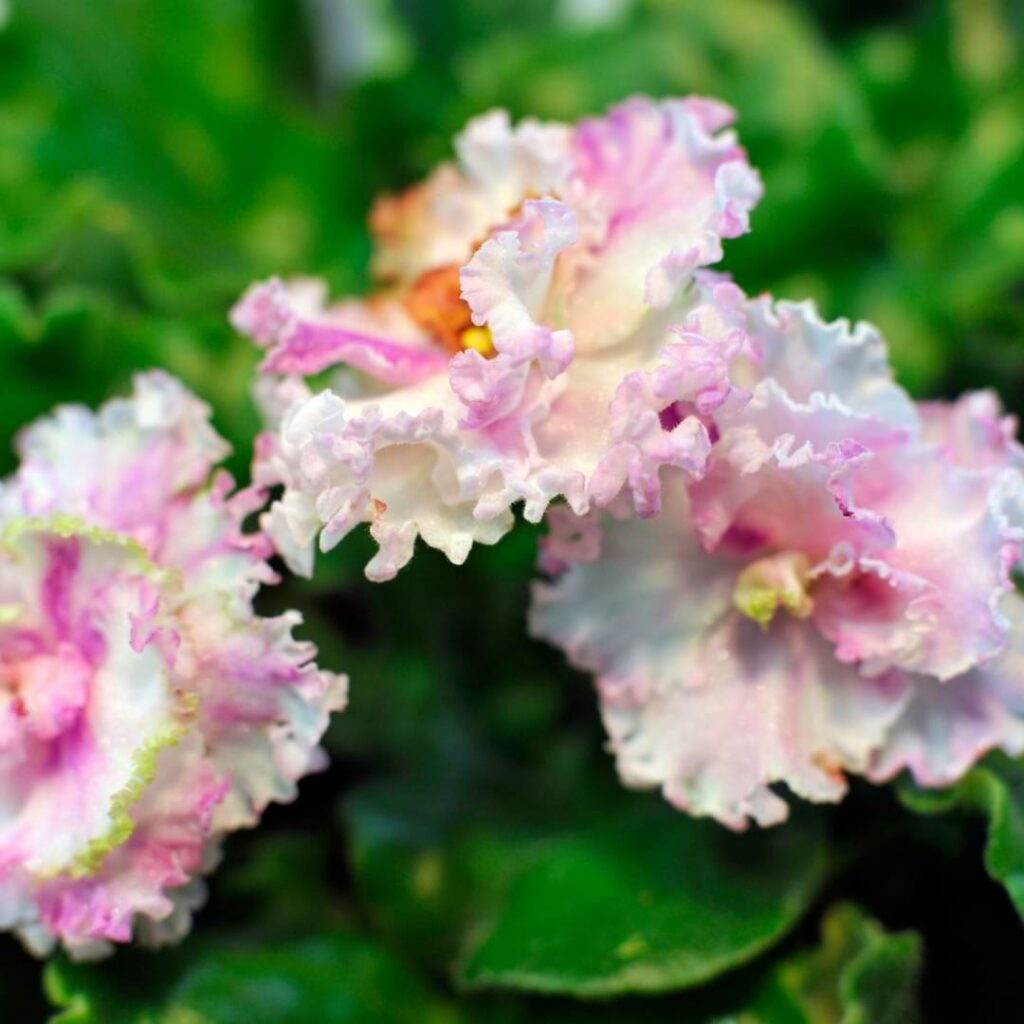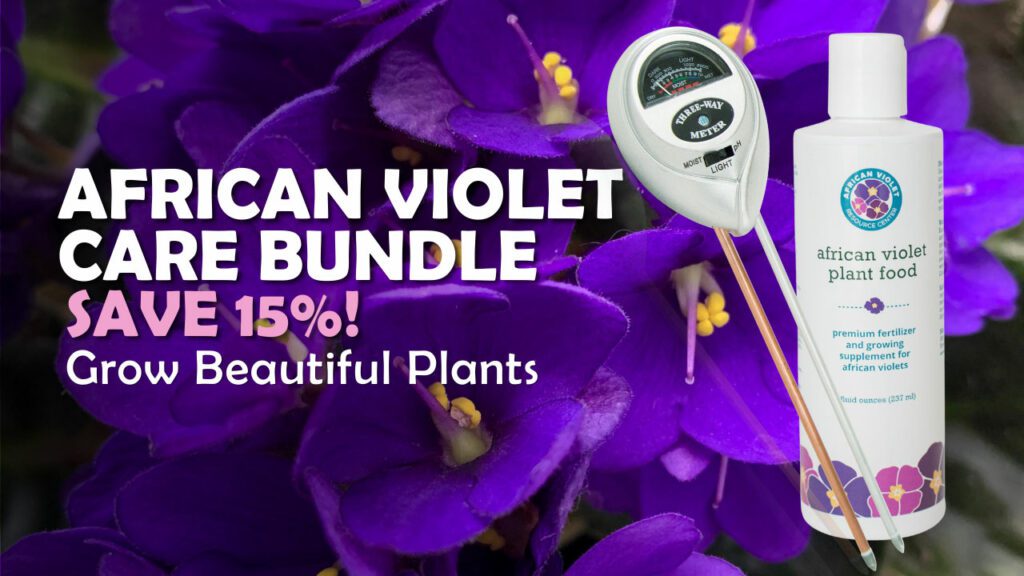African violets are among the most beloved houseplants for their vibrant colors, ease of care, and long-lasting blooms. This flowering plant has been used for centuries to bring life into homes and gardens.
Best of all, African violets come in a variety of beautiful shades. In this blog post, we’ll be exploring the different types of pink African violets that you can choose from to create your own unique indoor oasis. From subtle pinks to bold party puffs, these flowers are sure to add a touch of elegance and vibrancy to any home.
9 Types of Pink African Violets
What makes a pink African violet different from other violets?
For one, pink African violets tend to be more delicate than other violets. They require special care to ensure they stay healthy and bloom regularly.
Secondly, pink African violets typically have a softer, sweeter fragrance than other violets. This can make them more enjoyable to have indoors as a houseplant.
Finally, the blooms of pink African violets tend to be smaller and more delicate than those of other violets. But don’t let their size fool you – these little flowers pack a big punch of color!

1) Majesty African Violet
The Majesty African Violet is a type of pink African violet that is known for its large size. This variety of African violet can grow to be up to 18 inches wide and 24 inches tall. The leaves of the Majesty African Violet are dark green and have a glossy appearance. The flowers of this plant are typically a deep pink color, but they can also be white or purple.
2) Pink Pearl African Violet
This variety has dark green leaves with a deep purple underside, and its flowers are pale pink with darker pink streaks. The Pink Pearl is a semi-trailing plant, so it’s perfect for hanging baskets or cascading over the edge of a pot. It’s also fairly drought-tolerant, so you won’t have to worry about watering it too often.
3) Aelita
Aelita is a type of pink African violet that is known for its large, flat flowers. The flowers of this variety are a deep pink color with a white center. The leaves of the Aelita are dark green and have a wavy shape. This variety is also known for being one of the more heat tolerant varieties of African violets.
4) RS-Pink Paradise
If you’re looking for a pink African violet that’s truly unique, then RS-Pink Paradise is the perfect choice for you. This gorgeous variety has large, bright pink blooms with a delicate ruffled edge. The leaves are a deep green, making for a stunning contrast. RS-Pink Paradise is sure to add a touch of elegance to any room in your home.
5) Pink Panther
The creamy-pink color of the Pink Panther African violet makes it very unique, and it is perfect for adding some subtle color to your plant collection. This variety grows to be
6) EK-Goddess Of Beauty
This stunning African violet has a bright and vibrant pink color to the flowers, and each petal is ruffled. It is also a double bloom variety, and the flowers can get to be quite large for the size of the plant. This variety could also give up to ten flowers at once, making it look very full and quite beautiful.

African Violets With Pink Variegated Leaves
African violets with pink variegated leaves are truly unique and stunning plants. The leaves are splashed with shades of pink, making them a beautiful addition to any home or office. These plants are easy to care for and make great gifts for any occasion.
7) Wrangler’s Pink Patches
Wrangler’s Pink Patches is a type of African violet that gets its name from the pink patches on its leaves. This plant is native to Africa, and it is a popular houseplant in many parts of the world. The pink patches on the leaves of this plant are caused by a mutation in the genes that control leaf coloration. This mutation is believed to be responsible for the plant’s ability to produce more flowers than other types of African violets.
8) Kate’s Rendezvous
This standard sized African violet variety has a very interesting look. It features bright pink flower petals, typically four petals per bloom, and each petal is ruffled only at the tip. The leaves of this plant are a darker green with light pink variegation on the edges, making this one plant that will stand out among any plant collection.
9) Streptocarpus sect. Saintpaulia Hovariagata
While the name may be hard to pronounce, this variety is usually simply called a variegated African violet. This stunning African violet is very popular, but it is extremely hard to find in stock anywhere. It makes a great addition to any houseplant collection.
Pink African Violets Guide
Pink African violets are quite similar to other varieties of African violets. They can be a bit more temperamental than other varieties, but they still do well when cared for the same way.
Height and Spread
There is a lot of variation in terms of height and spread depending on the variety of African violet you have. Some varieties are dwarf varieties that only grow to be a few inches tall, while others can grow to be 18 inches tall, sometimes even bigger.
The spread of an African violet can also vary greatly, with some plants only spreading a few inches and others spreading to be over a foot wide.
When choosing an African violet, it is important to take height and spread into consideration. If you have a limited amount of space, then you will want to choose a dwarf variety. If you have more space to work with, then you can choose a variety that has a larger height and spread.
The size breakdown of African violet varieties are:
- Miniature – AV’s with a height and spread of less than 6 inches
- Semi-miniature – AV’s with a height and spread of 6-8 inches
- Standard – AV’s with a height and spread of 8-16 inches
- Large – AV’s with a height and spread over 16 inches
Seasonality and Lifespan
African violets are typically in bloom during the spring and summer months. However, with proper care, they can bloom year-round. To get year-round blooms, you’ll want to make sure everything in your plant’s environment is ideal for flowering, including the temperature, humidity, watering schedule, and fertilizing schedule.
The lifespan of an African violet can vary depending on the species and variety, but they typically live for 5-10 years. This is just an average, and people who take really good care of their African violets can expect them to live much longer than this.
Blooms
There are many different types of blooms that you can find on different varieties of African violets. From single flowers to double flowers, there is an African violet bloom out there for everyone. Here are some of the most popular types of blooms that you can find on African violets:
-Single Flowers: As the name suggests, these blooms only have one layer of petals. Single flowers are often more delicate looking than other types of blooms and can be a variety of different colors.
-Double Flowers: Double flowers have two layers of petals and often look like miniature roses. These blooms come in a variety of colors, but are most commonly found in shades of pink and purple.
-Miniature Flowers: Miniature flowers are smaller versions of single or double flowers. They often have fewer petals and may be a different color than the rest of the plant. Miniature flowers are perfect for those who want a more delicate looking African violet.
How to Care For Pink African Violets
Pink African violets are relatively easy to care for, but there are a few things you should keep in mind to keep your plant healthy and happy.
Soil: Keeping your African violet happy starts with the soil that it is planted in. Make sure whatever soil you use has excellent drainage, and that the pot has drainage holes. Better yet, give your plant a potting mix that is made specifically for African violets, and you won’t have to worry about your plant too much!
Watering: Pink African violets need to be kept moist, but not wet. Water them from the bottom by filling a saucer with water and letting the plant sit in it for a few minutes. Allow the soil to dry out slightly between watering.
You can always water from the top using a long-neck watering can, but bottom watering will ensure the roots get to soak up as much water as they need, and will prevent the water from flowing down the sides of the pot and never getting into the center of the soil.
Fertilizing: Use a fertilizer designed for African violets or other blooming plants. This African violet food ensures your plant gets all the nutrients it needs with smaller, more frequent feedings, which is beneficial for flowering plants. To get as many blooms as possible and keep your plant happy, fertilizing this way is the best option.
Light: Pink African violets do best in bright, indirect light. Too much direct sun will scorch the leaves, so if you live in a sunny climate, place your plant near a window that gets filtered sunlight.
African violets can tolerate some direct sunlight, but limit this to less than one hour, and keep a close eye on the leaves and the blooms. If they start to dry out, move the plant away from the direct light immediately and water it if the soil is dry.
If your home does not get very much natural light, you may need to supplement your African violet with some grow lights. Only have it on for 12 hours per day, as African violets need about 10 hours of darkness to signal to the plant to produce blooms.
Temperature: These plants prefer temperatures between 65-75 degrees Fahrenheit. Avoid drafts from windows or doors, as they can damage delicate leaves, and if your home is typically kept outside of this temperature range, it’s a good idea to find a way to alter the plant’s immediate surroundings to match this temperature, whether with a small fan or a space heater.
Humidity: Pink African violets like humid conditions, so misting the air surrounding the plant occasionally will help keep them happy. You can also use a humidity tray or pebble tray filled with water to increase the humidity around the plant.
Pruning: Pruning is essential for your African violet’s health. Deadhead (cut off) spent flowers regularly to encourage new growth, and to increase airflow through the plant. You can also lightly pinch back leggy stems to promote fuller growth.
When pruning your plant, make sure to use clean, sharp pruning shears every time. Do not go from plant to plant without sanitizing your pruning shears in between plants. This prevents the spread of disease and will keep all of your houseplants healthy.
Pests: There are many pests that will try to use your plant as their home, including spider mites, thrips, scale, fungus gnats, and more. Inspect your plant regularly for any signs of pests, and treat your plant accordingly to rid it of the infestation.
Recap: As long as you pay attention to your African violet, don’t overwater it, and ensure it’s getting the sunlight and nutrients it needs, your plant should be happy and thriving. Keep an eye out for pests that may try to make your plant their home, and handle the problem before it becomes an infestation, and your plant will continue to thrive!
There are so many beautiful pink African violets to choose from. From the plain single petal type to the more complex semi-double and double petal varieties, there is sure to be one that will speak to your decorative tastes. With proper care and maintenance, these beautiful plants can thrive for years in any home.
Are Pink Violets Toxic
African violets are not toxic to pets or people. However, the leaves and stems can cause skin irritation if they come into contact with the skin. That being said, it’s never a good idea to allow any pet (or child) to consume any part of a houseplant, even if it’s non-toxic.
FAQs African Violets
How many species of African violet are there?
There are thousands of varieties of African violets! Some of the most popular varieties are Aroma of Summer, Cherry Princess, and Diamond Tiffany. The most rare African violets are the Chimera varieties. Overall, there are over 16,000 different cultivars of African violet plants!
Join the African Violet Club!
Whether you’re just starting out or are a seasoned grower, African Violet Resource Center has everything you need to help your plant grow vibrant and strong. Explore our other articles, visit our online shop, and connect with other houseplant lovers in our Facebook group to learn everything you need to know about this rewarding hobby!
More Great African Violet Resources
The Best Houseplants for Your Environment
Everything You Need to Know About African Violet Leaves
6 Signs Your African Violet Is Dying and How to Revive It
Endless Summer: Here’s How to Grow an African Violet Garden That BLOOMS







